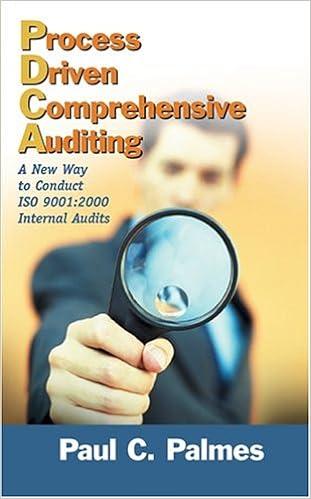Question
1. Problem 10-20 Effect of product versus period costs on financial statements LO 10-2 Gunn Manufacturing Company experienced the following accounting events during its first
1.
Problem 10-20 Effect of product versus period costs on financial statements LO 10-2
| Gunn Manufacturing Company experienced the following accounting events during its first year of operation. With the exception of the adjusting entries for depreciation, assume that all transactions are cash transactions. |
| 1. | Acquired $51,000 cash by issuing common stock. |
| 2. | Paid $7,200 for the materials used to make its products, all of which were started and completed during the year. |
| 3. | Paid salaries of $3,800 to selling and administrative employees. |
| 4. | Paid wages of $6,200 to production workers. |
| 5. | Paid $7,400 for furniture used in selling and administrative offices. The furniture was acquired on January 1. It had a $1,400 estimated salvage value and a four-year useful life. |
| 6. | Paid $11,400 for manufacturing equipment. The equipment was acquired on January 1. It had a $1,800 estimated salvage value and a three-year useful life. |
| 7. | Sold inventory to customers for $25,800 that had cost $13,100 to make. |
| Required | |||||||||||||||||||||||||||||||||||||||||||||||||||||||||||||||||||||||||||||||||||||||||||||||||||||||||||||||||||||||||||||||||||||||||||||||||||||||||||||||||||||||||||||||||||||||||||||||||||||||||||||||||||||||||||||||||||||||||||||||||||||||||||||||||||||||||||||||||||||||||||||||||||||||||||
| Show how these events would affect the balance sheet, income statement, and statement of cash flows by recording them in a horizontal financial statements model as indicated here. Also, in the Cash Flow column, indicate whether the cash flow is for operating activities (OA), investing activities (IA), or financing activities (FA). Use NA to indicate that an element is not affected by the event. The first event is recorded as an example. (Enter any decreases to account balances and cash outflows with a minus sign.)
| |||||||||||||||||||||||||||||||||||||||||||||||||||||||||||||||||||||||||||||||||||||||||||||||||||||||||||||||||||||||||||||||||||||||||||||||||||||||||||||||||||||||||||||||||||||||||||||||||||||||||||||||||||||||||||||||||||||||||||||||||||||||||||||||||||||||||||||||||||||||||||||||||||||||||||
2.
During its first year of operations, Beta Company paid $27,640 for direct materials and $18,200 in wages for production workers. Lease payments and utilities on the production facilities amounted to $7,200. General, selling, and administrative expenses were $8,200. The company produced 5,200 units and sold 4,200 units for $15.20 a unit. The average cost to produce one unit is which of the following amounts? (Round your final answer to 2 decimal places.)
3.
During its first year of operations, Silverman Company paid $11,360 for direct materials and $11,100 for production workers' wages. Lease payments and utilities on the production facilities amounted to $10,100 while general, selling, and administrative expenses totaled $3,400. The company produced 7,400 units and sold 4,600 units at a price of $6.90 a unit. What was Silverman's net income for the first year in operation? (Do not round intermediate calculations.)
4.
Ken believes his company's overhead costs are driven (affected) by the number of direct labor hours because the production process is very labor intensive. During the period, the company produced 4,800 units of Product A requiring a total of 780 labor hours and 2,300 units of Product B requiring a total of 180 labor hours. What allocation rate should be used if the company incurs overhead costs of $17,280?
$18.00 per labor hour
$2.43 per unit
$22.15 per labor hour for Product A and $96 per labor hour for Product B
None of these.
5.
The following information relates to Betty's Manufacturing for 2013:
| Raw materials used | $ | 9,800 |
| Direct labor wages | 29,800 | |
| Sales salaries and commissions | 24,800 | |
| Depreciation on production equipment | 1,980 | |
| Rent on manufacturing facilities | 14,800 | |
| Packaging and shipping supplies | 2,980 | |
| Sales revenue | 107,800 | |
| Units produced and sold | 9,800 | |
| Selling price per unit | $ | 11.00 |
Based on this information, what is the company's cost of goods sold for 2013? (Do not round intermediate calculations.)
$65,220
$42,580
$59,360
$84,160
6.
During its first year of operations, Silverman Company paid $14,000 for direct materials and $19,000 for production workers' wages. Lease payments and utilities on the production facilities amounted to $17,000 while general, selling, and administrative expenses totaled $8,000. The company produced 5,000 units and sold 3,000 units at a price of $15.00 a unit. What is Silverman's cost of goods sold for the year?
$50,000
$24,600
$30,000
$41,000
Step by Step Solution
There are 3 Steps involved in it
Step: 1

Get Instant Access to Expert-Tailored Solutions
See step-by-step solutions with expert insights and AI powered tools for academic success
Step: 2

Step: 3

Ace Your Homework with AI
Get the answers you need in no time with our AI-driven, step-by-step assistance
Get Started


